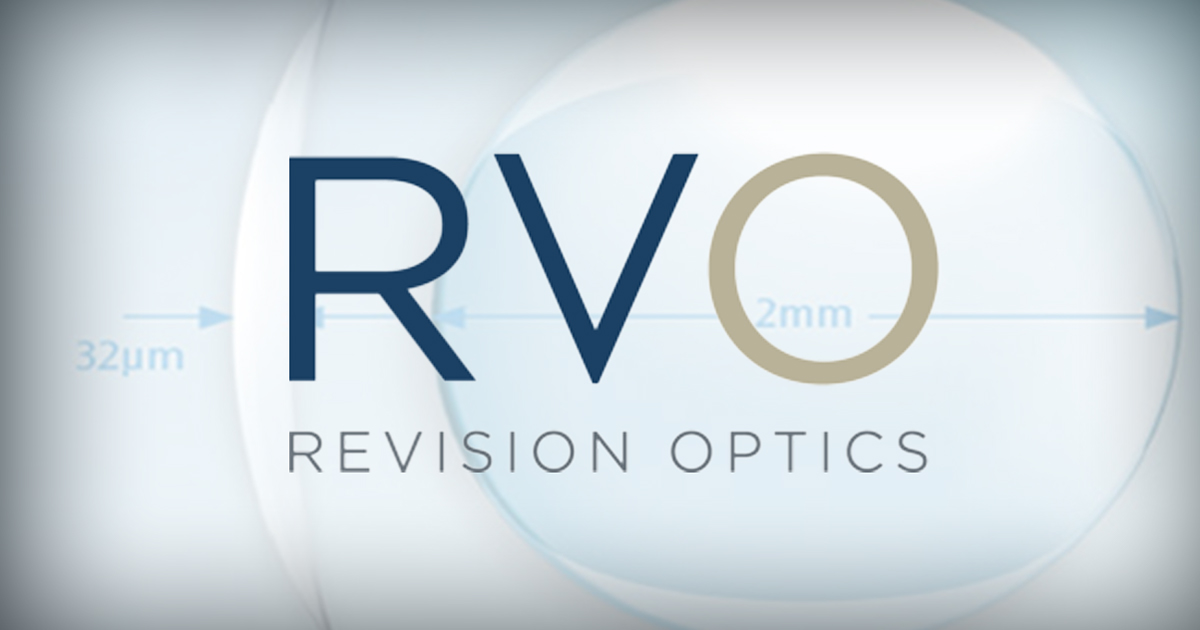A Look Behind ReVision Optics’ Shuttered Door

By Larry Haimovitch and Richard Mark Kirkner
Someday for some company, the business of selling corneal inlays to treat presbyopia could be very lucrative, but that day is not today and that company is not ReVision Optics, which abruptly closed its doors last week.
ReVision Optics developed the Raindrop Near Vision Inlay to correct presbyopia. The Food and Drug Administration approved the corneal inlay in June 2016. Last April ReVision announced that 1,000 Raindrop procedures had been performed in seven months since its launch. But for ReVision, the business proved difficult to build, and the company’s board and investors decided that enough was enough.
ReVision posted a message on its website announcing it was halting sales of the Raindrop Inlay on January 30 and would no longer honor Raindrop rebates. The site listed a hotline number – 1-866-934-6592 – which it said will be staffed through April 30, 2018.
‘Very Challenging’ Business
In an interview with OIS Weekly, ReVision CEO John Kilcoyne called the presbyopia segment “very challenging.” He said the reason for shuttering ReVision was that the company “could not get the business to grow fast enough.” The firm would have needed significantly more capital to achieve positive cash flow, and the investors – whom Kilcoyne called “very supportive” – were reluctant to put more money in. To date, ReVision had raised $150 million in funding.
Corneal inlays may yet find their place in ophthalmologists’ business models, but as of now they require more time and effort in a practice than either refractive or cataract surgery, which typically involve the operation itself and one follow-up visit. “Ophthalmic surgeons do not want to keep seeing their patients,” Kilcoyne said.
Other players in the space have faced their share of challenges. Privately held AcuFocus Inc., maker of the KAMRA corneal inlay that the FDA approved in April 2015, told OIS Weekly on Thursday that it took seven months to close in on 1,200 procedures. (This would put it at roughly the same paced as ReVision and Raindrop.) It secured $66 million in private financing from KKR in 2016, and much of the company’s focus has been on getting the IC-8 intraocular lens approved in the US. Presbia, maker of the Flexivue Microlens, has undergone recent management changes and refocused its priorities to preserve cash and fund its operations through the rest of this year and the anticipated FDA-approval of the device.
Talent and Mixed Press
ReVision didn’t fail for lack of talent. Kilcoyne is widely recognized in the ophthalmic industry. With more than 33 years in the medical device market, his track record includes taking Micrus Endovascular public and then leading the company until Johnson & Johnson acquired it in 2010. He currently serves on the board of directors of AdvaMed, the Advanced Medical Technology Association.
ReVision’s board included Gil Kliman, MD, managing director of InterWest Partners; Andy Corley, principal at Yelroc Consulting; Wende Hutton, general partner at Canaan Partners; Renee Ryan, vice president at Johnson & Johnson Innovation with decades in investment banking; and Brian Dovey, partner in the venture capital firm Domain Associates.
But mixed press has dogged the corneal inlay segment somewhat. Health Sciences Institute, a science watchdog website given to sensational headlines, posted a rather scathing report on the sector upon FDA approval of Raindrop.
Anecdotal reports of haze and explants of Raindrop – and, to be fair, Presbia’s Flexivue Microlens and AcuFocus’ KAMRA – have circulated. Most published reports of haze suggest that it is transient and treatable with either steroids of mitomycin C. In one study of 373 patients, 14% experienced haze, but steroids resolved that in all but one case.1 Again, that’s more visits to the ophthalmologist’s office after the procedure.
The reported explant rates of Raindrop seem to be in line with the clinical trials that led to its approval. Eleven eyes were explanted for causes including haze, surgical complications, and patient dissatisfaction, and 18 eyes required replacement of the inlay.1
A clinical review article by M. Amir Moarefi, MD, of Case Western Reserve-University Hospitals in Cleveland found high levels of satisfaction with the Raindrop inlay,2 but did include two reports of explants: one in a study of 20 eyes,3 and one in a study of 16 eyes.4 Both studies were published in 2013. The five Raindrop trials Dr. Moarefi cited tallied two explants in 109 cases.
With billions of presbyopes in the world and good outcomes, the corneal inlay sector has huge upside potential. It may be just a matter of finding a strategic investor with the patience and deep pockets to build the business. Or, if a savior, or salvager, picks up the Raindrop inlay franchise at a fire sale price and adds it onto other offerings to the cataract surgeon, the corneal inlay space could boost its foothold.
REFERENCES:
- Whitman J, Dougherty PJ, Parkhurst GD, et al. Treatment of presbyopia in emmetropes using a shape-changing corneal inlay: one-year clinical outcomes. Ophthalmology 2016;123:466-475.
- Moarefi MA, Bafna S, Wiley W. A review of presbyopia treatment with corneal inlays. Ophthalmol. Ther. 2017;6:55-65.
- Garza EB, Gomez S, Chayet A, Dishler J. One-year safety and efficacy results of a hydrogel inlay to improve near vision in patients with emmetropic presbyopia. J. Refract. Surg. 2013;29:166-172.
- Chayet A, Barragan Garza E. Combined hydrogel inlay and laser in situ keratomileusis to compensate for presbyopia in hyperopic patients: one-year safety and efficacy. J. Cataract Refract. Surg. 2013;39:1713-1721.
